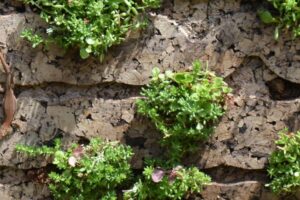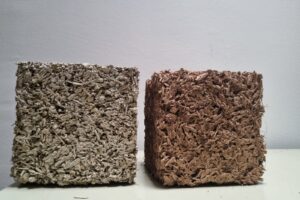
iMAGING, an app to diagnose malaria using artificial intelligence
January 25, 2024
CP4C: New therapies for bone cancer treatment and tissue regeneration
January 30, 202430/01/2024
CD6 researchers at the UPC participate in a project to design and construct a proof of concept of a system that has laser technology and sensors to detect and map the underwater environment.
The aim of the BEACON project, in which the Centre for Sensors, Instruments and Systems Development (CD6) at the Universitat Politècnica de Catalunya – BarcelonaTech (UPC) is participating, is to design and construct a proof of concept of a light detection and ranging system (LIDAR) for autonomous underwater vehicles. The proposed system will use laser technology and sensors to detect and map the underwater environment and will enable the autonomous vehicle to navigate in a safe, precise way without human intervention.
Direct LIDAR measurement systems (direct time-of-flight, d-TOF) are characterised by obtaining measurements without subsequent calculations. This is achieved by sending a light pulse towards a target and counting the time it takes to return using electronic timers. These point distance measurements can be converted into high resolution images through various techniques for scanning the scene. There is a wide range of configurations and systems that enable adaptation to different applications and requirements, from mobile phones to autonomous cars.
The complexity of the operation in the marine environment, combined with the difficulties inherent in underwater images, have hampered the development and application of this type of technologies to date. The main challenges that still need to be overcome are the severe attenuation of optical radiation, the use of uncommon wavelengths, and the presence of turbidity, particularly in coastal areas.
As part of the project, a light source will be developed that is tailored to the conditions of underwater operation. A LIDAR system will be adapted so that it can incorporate complementary sensors (RGB image, thermal image). It will be integrated into an underwater remotely operated vehicle (ROV), to validate autonomous navigation capabilities in relevant conditions.
BEACON will contribute to generating a significant impact in several industries:
- Improvements in the maintenance and inspection of underwater infrastructure.
- Expansion of the possibilities of sensors that can be used in underwater robotic vehicles, to make them more reliable and adaptable to their environment.
- Zoological and oceanographic applications for projects to analyse and conserve marine life.
Consortium, budget and funding
In addition to CD6 at the UPC, participants in the project include Subsea Mecatronics, Radiantis, Beamagine and Secpho. The project has a duration of 9 months (and is expected to conclude in April 2024). It has received funding from the grant programme to support innovative business groups (AEI-010500-2023-156 of the Recovery, Transformation and Resilience Plan) of the Spanish Government’s Ministry of Industry, Energy and Tourism (MINETUR).
Topic
You want to know more?
Related Projects
- A research team from the inLab FIB at the Universitat Politècnica de Catalunya - BarcelonaTech (UPC), together with the Asociación de Personas con Movilidad Reducida (AsoPMR), has taken part in the Spot4Dis project to enhance the mobility and autonomy of people with reduced mobility.
- The La Volta project foresees the construction of a large Catalan vault pergola within the Llars Mundet campus, in the Montbau neighbourhood (Horta-Guinardó district). This structure will become a new architectural landmark for Barcelona, combining traditional construction techniques with contemporary innovation. The project involves the Rehabilitation and Architectural Restoration Research Group (REARQ), at the Universitat Politècnica de Catalunya - BarcelonaTech (UPC), and is led by the Architects’ Association of Catalonia (COAC) and the Barcelona Provincial Council.
SATE-VEG: A system for energy renovation of buildings that helps reduce the urban heat island effect
Researchers from the Architecture, Energy and Environment (AiEM) group at the Universitat Politècnica de Catalunya - BarcelonaTech (UPC) have developed SATE-VEG, an external thermal insulation system with a vegetal coating that offers seasonally adaptive thermal behaviour, enhances urban biodiversity and promotes positive health effects. The system is made from organic materials, requires low maintenance and consumes minimal water.- A research team from the Interdisciplinary Group on Building Science and Technology (GICITED) at the Universitat Politècnica de Catalunya – BarcelonaTech (UPC) is leading the BioSAFE project, which aims to develop sustainable building envelopes —mainly façades— designed according to sustainability, comfort and safety criteria, with particular attention to their acoustic behaviour and fire performance.




